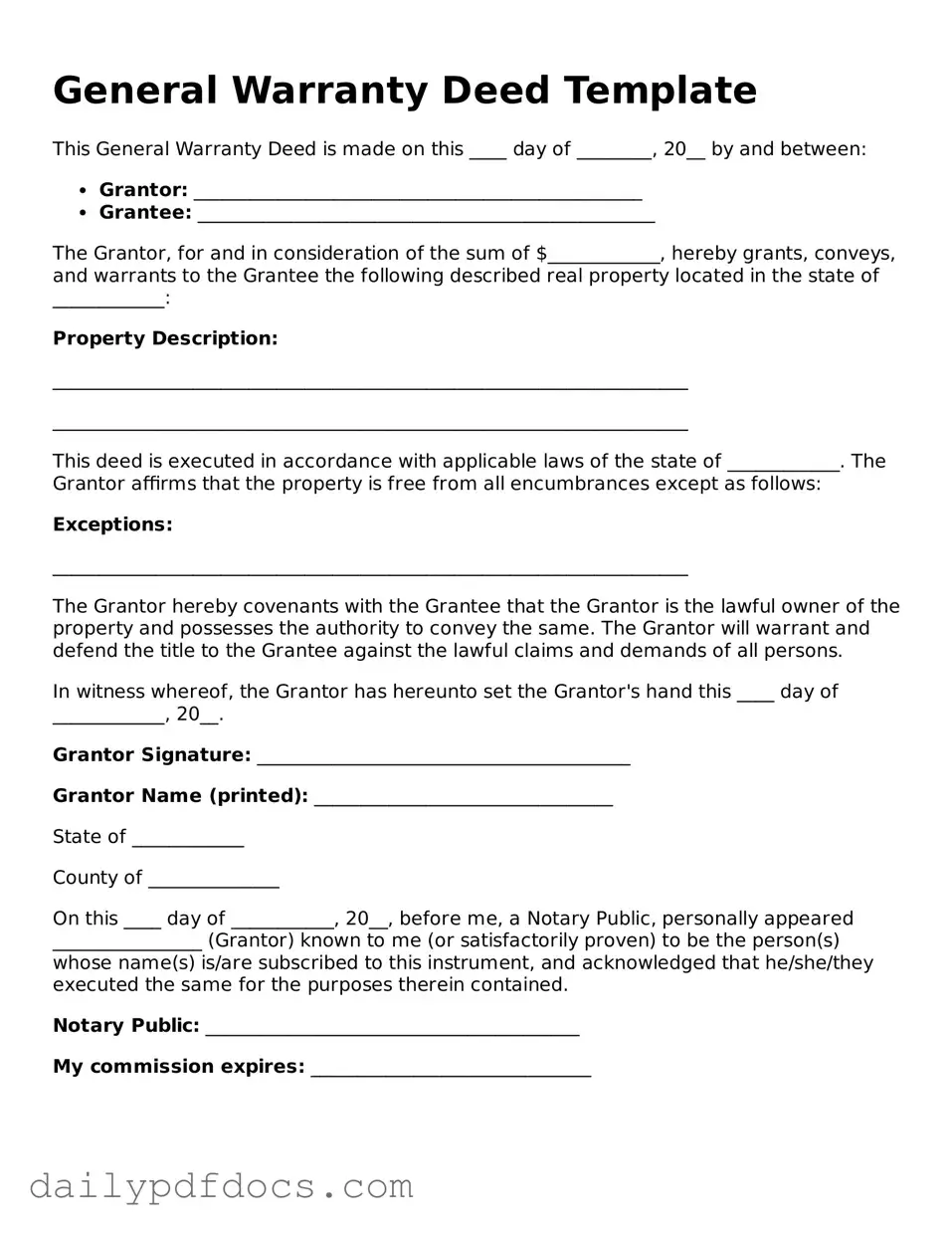What is a Deed form?
A Deed form is a legal document that conveys an interest in real property from one party to another. It serves as proof of ownership and outlines the rights and responsibilities associated with that property. Deeds can vary in type, including warranty deeds, quitclaim deeds, and special purpose deeds, each serving different purposes in property transactions.
Why do I need a Deed form?
If you are buying or selling property, a Deed form is essential. It ensures that the transfer of ownership is legally recognized and protects the rights of both parties involved. Without a properly executed Deed, disputes may arise over property ownership, making it crucial to have this document in place during any real estate transaction.
What information is typically included in a Deed form?
A standard Deed form includes the names of the parties involved, a description of the property, the date of the transaction, and any terms or conditions relevant to the transfer. Additionally, it may contain the signatures of the grantor (the seller) and the grantee (the buyer), along with a notary's acknowledgment to validate the document.
How do I fill out a Deed form correctly?
To fill out a Deed form, start by clearly identifying the parties involved. Next, provide a detailed legal description of the property, which can often be found in previous deeds or property tax records. Be sure to include any specific terms of the transfer. Finally, ensure that all parties sign the document in the presence of a notary public, as this step is crucial for the Deed's legal validity.
Can I create my own Deed form?
While it is possible to create your own Deed form, it is highly recommended to use a template or consult with a real estate professional. Laws governing property transfers can be complex and vary by state. A well-crafted Deed ensures compliance with local regulations and helps prevent potential legal issues down the line.
What happens after I complete the Deed form?
Once the Deed form is completed and signed, it must be recorded with the appropriate local government office, usually the county clerk or recorder's office. This step is vital as it provides public notice of the ownership transfer and protects your rights as the new owner. Failing to record the Deed could result in complications regarding ownership in the future.
Are there different types of Deed forms?
Yes, there are several types of Deed forms, each serving specific purposes. A warranty deed provides the highest level of protection to the buyer, ensuring that the seller holds clear title to the property. A quitclaim deed, on the other hand, transfers whatever interest the seller has without any guarantees. Understanding the differences is essential for choosing the right type of Deed for your situation.
What should I do if I lose my Deed form?
If you lose your Deed form, don't panic. You can obtain a copy from the local recording office where the original Deed was filed. It’s important to keep a copy of your Deed in a safe place, as it is a crucial document for proving ownership of your property. If necessary, consult a legal professional for further assistance in replacing lost documents.
